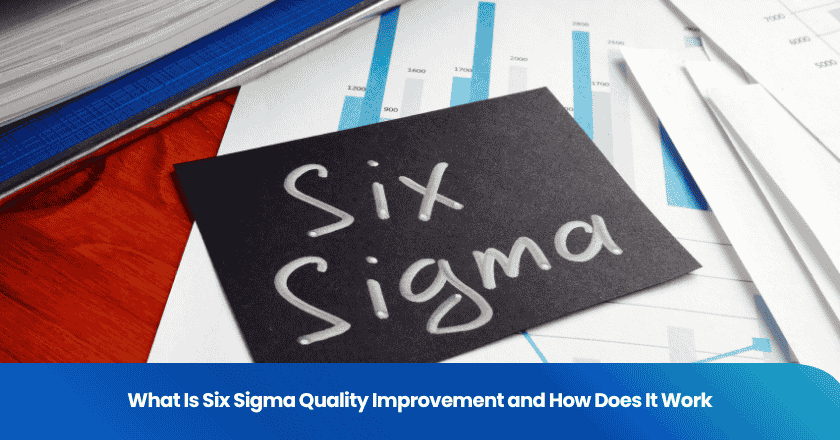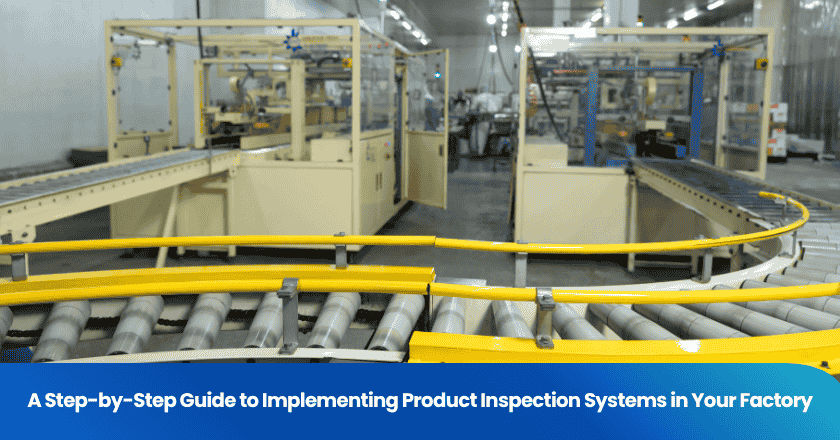
Six sigma quality improvement gives you a powerful way to enhance process performance and achieve higher quality. Six sigma uses a data-driven methodology to reduce variation and defects in every process, product, or service.
By focusing on the Voice of the Customer and the Voice of the Business, you align your operations with customer expectations. You set measurable goals and monitor feedback, which drives continuous quality improvement and ensures your process meets evolving needs.
Key Takeaways
- Six Sigma is a data-driven method that aims to reduce defects and improve process quality across various industries.
- The goal of Six Sigma is to achieve fewer than 3.4 defects per million opportunities, ensuring high standards of performance.
- Continuous improvement is essential in Six Sigma, focusing on streamlining processes and enhancing customer satisfaction.
- The DMAIC framework guides you through a structured approach to improve existing processes, while DMADV is used for designing new ones.
- Implementing Six Sigma can lead to significant cost savings, improved efficiency, and higher customer loyalty.
Six Sigma Quality Improvement
Definition
You encounter Six Sigma as a quality management methodology that uses data and statistical analysis to drive process improvement. This method aims to identify and eliminate defects in your processes, whether you work in manufacturing, healthcare, or service industries. Six Sigma quality improvement sets a high standard for performance, targeting fewer than 3.4 defects per million opportunities. You use this method to reduce variability, enhance customer satisfaction, and create more consistent results.
Six Sigma gained global recognition in the late 1990s when major organizations adopted it to transform their operations. Today, you can leverage advanced technologies, such as AI, to process large datasets and make more informed decisions. This evolution allows you to improve the process with greater speed and accuracy.
You rely on Six Sigma to establish a structured approach to quality improvement. The method provides you with tools to analyze data, measure performance, and implement changes that lead to better outcomes. By focusing on facts and evidence, you ensure that every improvement process delivers measurable results.
- Six Sigma is a data-driven methodology aimed at improving processes by identifying and eliminating defects.
- It focuses on reducing variability and enhancing customer satisfaction.
- The goal is to achieve less than 3.4 defects per million opportunities, which defines the 'Six Sigma' standard.
Purpose
You use Six Sigma quality improvement to achieve near-perfect processes and align your operations with customer expectations. The primary purpose centers on reducing defects, improving quality, and enhancing operational efficiency. You strive to create uniform processes that deliver consistent, high-quality results every time.
- Reducing defects
- Improving quality
- Enhancing operational efficiency
You also aim to decrease variations in your end products and minimize product defects. This approach helps you build trust with your customers and ensures that your organization meets or exceeds industry standards.
Six Sigma quality improvement frameworks guide you through a continuous improvement process. You follow structured steps to define problems, measure current performance, analyze root causes, implement solutions, and control the new process. This cycle of improvement keeps your organization focused on long-term success.
- The term 'Six Sigma' represents a statistical target of near-perfect quality.
- The focus is on minimizing defects and improving processes through data-driven approaches.
- Continuous improvement is a core principle, aiming for better performance over time.
You benefit from Six Sigma by embedding a culture of quality and improvement throughout your organization. The method applies across various industries, helping you achieve operational excellence and deliver value to your customers.
Six Sigma Principles
Reducing Defects
You focus on reducing defects as the core of Six Sigma. This principle drives you to identify every possible source of error in your process. You use statistical models to analyze production data and determine the long-run defects per million opportunities. The ultimate goal of Six Sigma is to achieve no more than 3.4 defects per million opportunities (DPMO). Many successful hospitals operating for five years have reached an average defect rate of about 1%. When you apply basic Lean Six Sigma tools, you can achieve this rate. With advanced tools, you can lower defect rates to 0.03%.
- The Six Sigma approach targets defect reduction and prevention.
- You strive for reducing process variation to deliver consistent results.
- You measure and monitor defects to ensure continuous improvement.
Data-Driven Approach
You rely on data to guide every improvement decision in Six Sigma.
The data-driven approach in Six Sigma quality improvement significantly enhances traditional quality management methods by incorporating advanced analytical tools and methodologies. This allows for a more rigorous and systematic examination of processes, leading to improved outcomes and adaptability in various industries.
You use tools such as frequency plots, histograms, Pareto charts, and control charts to analyze your process. For example, you might use a Pareto chart to find that most defects come from just a few causes. This insight helps you focus your improvement efforts where they matter most. You also incorporate AI and machine learning for complex data analysis, uncovering patterns and predicting outcomes that traditional methods may miss. Intelligent control systems allow you to make real-time adjustments, keeping your process on track.
Continuous Improvement
You embrace continuous improvement as a guiding principle in Six Sigma. This mindset ensures that you never settle for current results. Instead, you look for ways to streamline your process, reduce waste, and enhance quality.
You measure your progress using metrics such as Defects Per Million Opportunities, First Pass Yield, Cycle Time, and Customer Satisfaction. These metrics help you track your improvement journey and demonstrate the value of Six Sigma in your organization.
Six Sigma Methodologies
DMAIC
You use the DMAIC framework as the cornerstone of the six sigma method for improving existing processes. DMAIC stands for Define, Measure, Analyze, Improve, and Control. Each phase guides you through a structured approach to identify and eliminate defects, ensuring your process delivers consistent quality.
You start by defining the problem and understanding what your customers expect. You measure current performance to create a baseline. You analyze data to find the root causes of defects. You improve the process by implementing targeted solutions. You control the process to sustain gains and prevent regression.
Many organizations report a 15-25% improvement in key performance indicators after using DMAIC. Some even achieve millions in annual savings by reducing process variation and defects.
DMAIC helps you focus on data-driven decisions. You use statistical tools to monitor process control and ensure that improvements last. This approach builds a culture of continuous improvement and high-quality outcomes.
DMADV
You turn to DMADV when you need to design new processes or products that meet six sigma standards. DMADV stands for Define, Measure, Analyze, Design, and Verify. This methodology ensures you create high-quality designs that align with customer needs and prevent defects from the start.
You begin by defining project goals and customer requirements. You measure and analyze data to understand what the new process or product must achieve. You design solutions that address these needs. You verify the new design through testing and validation, ensuring it meets six sigma quality standards before full-scale implementation.
DMADV prevents defects by building quality into the process from the ground up. You use this approach when existing processes cannot meet customer expectations or when launching entirely new products.
Lean Six Sigma and Waste Reduction
You enhance six sigma by integrating Lean principles, creating Lean Six Sigma. This approach focuses on both defect reduction and waste elimination. You identify non-value-added activities and remove them to streamline your process.
- Lean manufacturing targets the elimination of non-value-added activities.
- You promote a culture of continuous improvement.
- You aim for waste minimization and pollution prevention.
Lean Six Sigma empowers you to achieve operational excellence. You combine the strengths of both methodologies to reduce defects, improve process control, and deliver superior quality. You involve your team in every step, driving engagement and accountability. This holistic approach leads to sustainable improvement and measurable results across industries.
 Learn more Quality Inspection Standard
Learn more Quality Inspection Standard
Roles and Certifications
Key Roles
You play a vital part in six sigma projects by taking on specific roles that drive improvement and ensure process success. Each role carries unique responsibilities, and your involvement shapes the outcome of every six sigma initiative.
The following table outlines the main roles and their duties:
| Role | Responsibilities |
|---|---|
| Leadership | Define the purpose of the six sigma program, explain benefits to the customer, set schedules, and support team members. |
| Sponsor | Commit to six sigma success, solve problems, and coordinate resources. |
| Implementation Leader | Supervise the six sigma team, organize training, and motivate members to achieve improvement goals. |
| Coach | Set schedules, mediate conflicts, and identify project success. |
| Team Leader | Oversee team work, communicate with the sponsor, and keep the project on schedule. |
| Team Member | Complete assigned duties and meet deadlines for each process improvement project. |
You see that six sigma teams rely on strong leadership and clear communication. When you take on a role, you help guide the process, solve problems, and maintain focus on improvement. Your actions contribute to a culture of continuous improvement and measurable results.
Certification Levels
You advance your six sigma career by earning certifications that validate your skills and experience. Each certification level reflects your knowledge and ability to lead improvement projects.
The table below summarizes the requirements for each level:
| Certification Level | Requirements |
|---|---|
| White Belt | Basic understanding of six sigma principles. |
| Yellow Belt | Knowledge of six sigma tools and techniques; participation in projects. |
| Green Belt | Lead improvement projects; complete green belt training. |
| Black Belt | Advanced knowledge; hold green belt certification and project experience. |
| Master Black Belt | Extensive experience; hold black belt certification and leadership skills. |
- You must obtain green belt certification before pursuing black belt status.
- You gain experience by leading and executing process improvement projects.
- Six sigma training programs deliver real ROI, develop problem-solving skills, and validate your competency.
- Certified projects build a culture of improvement and deliver measurable impact.
- You notice that six sigma credentials often lead to salary gains and increased demand for talent.
You create value for your organization by mastering six sigma principles and leading process improvement. Your certification demonstrates your commitment to quality and continuous improvement.
Improvement Applications
Examples
You see six sigma applied across industries to drive measurable improvements in process efficiency and customer satisfaction. In manufacturing, automotive plants use six sigma and Lean principles to reduce assembly time by 20% and defect rates by 30%. This leads to higher throughput and lower costs. Hospitals implement six sigma to decrease patient discharge times by 15%, which improves bed availability and satisfaction. Banks streamline loan processing, with one institution reducing mortgage application time by 40%, enhancing onboarding and satisfaction.
- A hospital reduced post-operative stays by nearly two days by addressing delays in lab results and administrative processes.
- Medical groups standardized billing, resulting in fewer claim denials and increased revenue.
- Cleveland Clinic improved patient flow and reduced lab turnaround time, leading to shorter stays and better diagnostic accuracy.
- Virginia Mason Medical Center achieved a 74% decrease in medication errors by redesigning pharmacy processes using six sigma tools.
- North Shore-LIJ Health System cut average emergency department wait times in half, significantly increasing patient satisfaction.
Six sigma methodologies help you identify bottlenecks and eliminate waste, which improves customer satisfaction and process reliability.
Benefits
You gain substantial benefits when you implement six sigma to improve process performance and satisfaction.
The following table highlights the most commonly reported advantages:
| Benefit | Description |
|---|---|
| Improved Resource Utilization | Identifying bottlenecks and redundancies leads to more efficient use of resources. |
| Higher Return on Investment (ROI) | Companies report significant savings, with some saving billions over several years. |
| Enhanced Customer Satisfaction and Retention | Consistent high-quality output mitigates risks of negative customer experiences. |
| Customer-Centric Approach | Emphasizes the importance of customer feedback to align processes with expectations. |
| Fewer Complaints, More Loyalty | Reduced variation leads to fewer errors, enhancing customer loyalty. |
| Net Promoter Score (NPS) Improvements | Organizations often see a rise in NPS, indicating higher customer satisfaction. |
| Data-Driven Decision Making | Fosters a culture of analytics and evidence-based decisions. |
| Performance Benchmarking | Establishes clear metrics for objective progress measurement. |
| Risk Mitigation | Helps predict potential risks through root cause analysis. |
| Strengthened Organizational Culture | Instills a mindset of continuous improvement and accountability. |
| Employee Empowerment | Involvement in six sigma projects boosts morale and engagement. |
| Leadership Alignment | Ties six sigma goals to business objectives, reinforcing quality importance. |
| Cross-Functional Collaboration | Encourages teamwork and knowledge-sharing across departments. |
| Competitive Advantage in the Marketplace | Enhances brand perception and market credibility through six sigma certifications. |
| Faster Time-to-Market | Streamlined processes allow for quicker product and service launches. |
| Better Compliance and Regulatory Adherence | Ensures adherence to standards and regulations, critical in certain industries. |
| Scalability and Global Application | Six sigma methodologies can be applied across various industries and scales. |
You notice that six sigma delivers significant cost savings. Organizations report reductions of 20% to 50% within two years. Some achieve annual savings exceeding hundreds of millions. Six sigma stands out for its data-driven approach, focusing on reducing variability and eliminating defects. This sets it apart from other quality management systems, which may emphasize frameworks over analytical methodologies. When you integrate six sigma with other systems, you enhance compliance, process performance, and satisfaction.
You achieve remarkable results with six sigma by focusing on quality and process improvement.
Organizations report dramatic reductions in defects, as shown below:
| Industry | Impact on Defects |
|---|---|
| Automotive | 40% fewer part variations |
| Pharmaceutical | 99.9% defect detection rate |
| Semiconductor | 60% lower defect rates |
You boost efficiency through waste reduction, improved time management, and increased customer loyalty. Lean six sigma transforms production and minimizes fluctuations. You sustain results by involving leadership, training employees, and fostering a culture of continuous improvement. Explore six sigma to elevate efficiency and drive lasting change.
FAQ
What is the main goal of six sigma?
You use six sigma to reduce defects and improve quality. This approach helps you create reliable products and services that meet customer expectations. You focus on data and analysis to drive better results.
How does six sigma differ from other improvement methods?
You rely on six sigma for its strong data-driven approach. This method uses statistical tools to identify and eliminate defects. You achieve measurable improvements in your process and maintain high standards.
Who should participate in six sigma projects?
You benefit from involving team members at all levels. Six sigma projects often include leaders, managers, and staff. Everyone contributes to process improvement and shares responsibility for success.
How do you measure success in six sigma?
You track metrics such as defect rates, cycle time, and customer satisfaction. Six sigma gives you clear targets and tools to monitor progress. You use these measures to ensure lasting improvements.
Grow your business with TradeAider Service
Click the button below to directly enter the TradeAider Service System. The simple steps from booking and payment to receiving reports are easy to operate.



